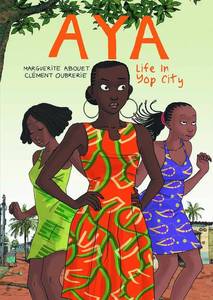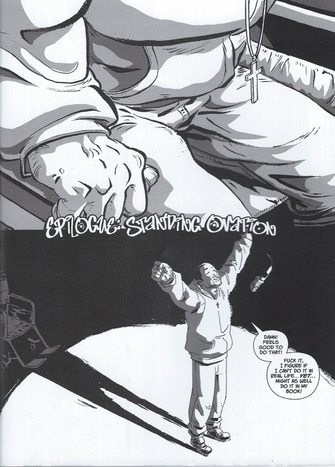 Originally posted at Fledgling: Zetta Elliot's Blog. It is unlikely that anyone who reads comics regularly will be surprised by Zetta Elliott’s answer to the question posed in her January 6, 2014 post, “Do Comics Empower Black Girls?” She’s doubtful, and understandably so, given the hypersexualized objectification of women that dominates superhero comics. Nevertheless, comics can tell deeply rewarding, complex stories about black women that affirm their intelligence, compassion, strength, and beauty on multiple visual and verbal registers. So I come away from the question with a different response, not only as someone who studies race and comics, but also as a black girl who has found much to love in a comic book. Let’s be clear, though, about the term “comics.” Critics often take issue with the depiction of women in superhero titles produced by Marvel (Disney) or DC Comics (Time Warner), but it’s a mistake to equate the superhero genre and its transmedia properties with the entire comics form. This isn’t to say that mainstream superhero comics completely ignore the lives of women of color or refuse to engage contentious social issues. Storm is one of the most well known heroines of any race to wear a cape and a Wakandan princess has held the title of Black Panther. The new Ms. Marvel is Kamala Khan, a Muslim Pakistani-American teenager from New Jersey. Yet one need only look back at Don McGregor’s account of his exchange with Stan Lee over Marvel’s first interracial kiss – or more recently, “Batwomangate” – to get a sense of the effort required to take even small, measured risks in a mainstream superhero comic. But what about fantasy, romance, horror, slice-of-life, and adventure stories? What about small and independent presses or self-published titles? What about comics produced outside the United States? Originally posted at The Hooded Utilitarian. In the comics memoir, Sentences: The Life of M.F. Grimm, Percy Carey tells of his experiences growing up in New York, finding success as an emcee in the early 90s, and getting caught up in the drug trade and gang shootings that would eventually leave him paralyzed from the waist down. Artist Ron Wimberly sketches Carey on the graphic novel’s cover in a wheelchair as he is now, rather than surrounded by fans or performing on the stage he once shared with names like Snoop Dogg and Tupac. The choice is fitting, given Carey’s interest in conveying the social and economic realities of his life behind these scenes and after spending time in prison. But in the epilogue subtitled “Standing Ovation,” Carey grasps the wheelchair’s arms and pushes himself up. A microphone dangles in the air above him. With his arms stretched out, chin raised, he steps forward and says: “Damn! Feels good to do that! Fuck it, I figure if I can’t do it in real life…yet…might as well do it in my book!” When we are asked to consider what makes comics unique, I think that our conversation should include scenes like this one. We know that the distinguishing features of comics can extend beyond formal elements to include stylistic practices that develop and advance whenever a sequence of words and pictures tell a story. In this case, Sentences provides an opportunity to talk about what happens when genre conventions refuse to stay put in graphic narratives that are based on actual events.
|
AboutAn archive of my online writing on comics, literature, and culture. (Illustration above by Seth!) Categories
All
Archives
July 2020
|


 RSS Feed
RSS Feed